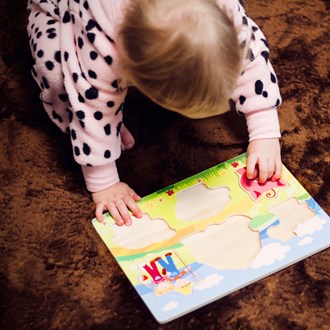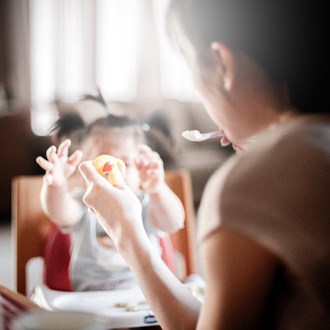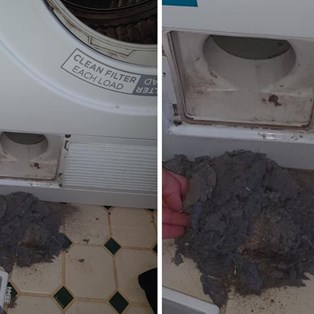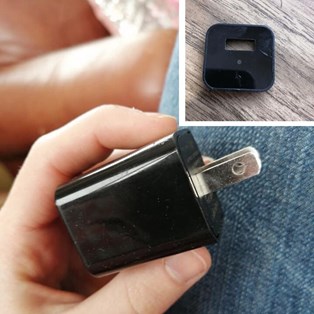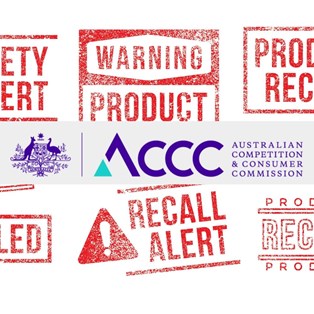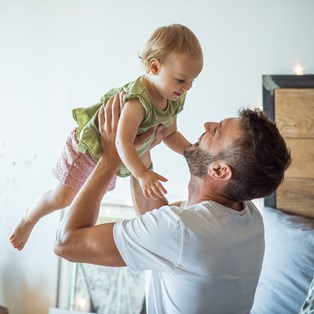How to keep your kids safe around electricity
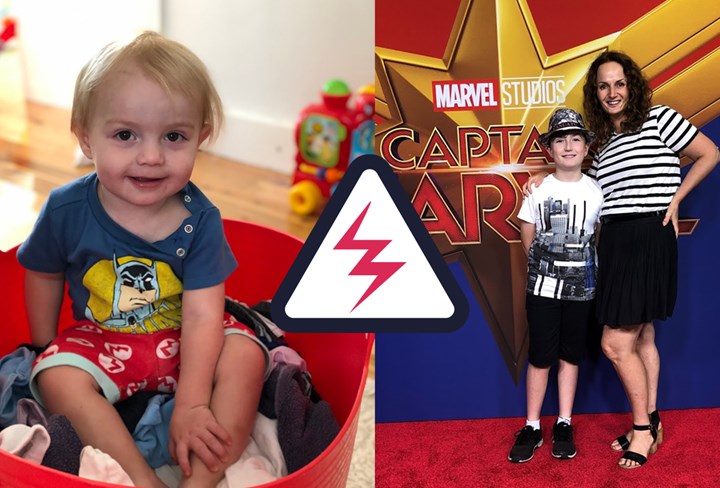
Teaching our children age-appropriate electrical safety around the home is easier (and more important) than you might think.
“I was just nine years-old when I poked a knife into a toaster to dislodge the ‘stuck’ toast… and was thrown backwards across our kitchen.
I still remember the force of the shock. I was standing on a chair at our kitchen bench and the next minute I was flying through the air and landed three meters away. My mum (a single mum with four children) was at work, my older brothers and sisters were outside playing and I was hungry for an after school snack. I had to quite literally peel myself up off the floor and dust myself off – on my own. That was my first hands-on lesson about the dangers of electricity.
Now, as a mum of two boys – Maxwell, 10, and Louis, 20 months – I’m acutely aware of how quickly accidents can happen. I’ve retold my ‘toaster and knife’ story to Maxwell countless times. I’ve explained how important it is to switch off appliances at the wall and unplug them before attempting anything slightly dangerous. There will be times when mum or dad aren’t around, so he needs to understand and make educated decisions for himself.
Of course, there’s a world of potential dangers in every family home, and teaching your kids the best ways to avoid them can seem overwhelming.
That’s why we’ve created this simple and clever guide to help you teach your little ones about common electrical dangers.
1. Go low: get down on their level
Both literally and figuratively! I crawled around my house when both boys were toddlers to identify any electrical dangers. I plugged up power points with plastic outlet plugs that are difficult for adults to remove – let alone little fingers!
I hid powerboards out of sight and behind beds and drawers. My partner drilled a hole in the back of the TV cabinet to thread the powerboard cord through to avoids tangly cords lying around. We also stopped charging our phones, tablets, Fit Bits and daily electrics in low power points.
It’s always important to remember that cables need enough space for heat to escape when doing this. If they are in a small enclosed space, they might overheat and burn through their protective coverings so always make sure there’s plenty of airation and space.
There’s a range of safety gear available to prevent electrical dangers including cord shorteners, non-conductive covers for hanging electrical cables, power surge boards, child-proof plastic boxes for electrics and more – all which can help minimise risks and dangers.

Franki’s sons, Louis, 20 months and Maxwell, 10, are learning about safe use of electronics every day.
2. Safe as houses: teach age-appropriate safety
Louis is only 20 months old but he understands ‘no’ and ‘ouch’. He also understands that flicking the ‘on and off’ button on the power points is a ‘no’, and we’re trying to bridge the language and learning gap to expand that to ‘ouch’ if he does continue flicking the switch!
Maxwell, 10, has learnt things over the years and we’ve added information gradually to build his knowledge. For example, I explained my ‘toaster and knife’ experience to him when he was about age 5. Over the years I’ve added information to the story. He now understands that I was holding a stainless steel knife, which is conductive (electricity runs through it and consequently, through my body). I explained to him that if I had been holding a knife with a different material handle, such as rubber or acrylic (which doesn’t attract electricity), the electrical current would have stopped at that point.
We taught Maxwell about water and electrical safety very early – from age 3. The lesson arose during a trip to Scotland to visit his grandparents. In Britain, bathrooms typically don’t have power points and where they do, they are low voltage. This is to avoid the risk of water and electricity causing shocks.
This was a bit of a shock to me (no pun intended), as I was used to blow drying my hair in the bathroom back in Australia. So, in a roundabout way, I also learnt the dangers of common appliances and electricity from the trip, including the danger of having bare feet in a water puddle. We quickly passed on those learnings to Maxwell too. Needless to say, I don’t dry my hair in the bathroom while the kids are in the bath anymore.
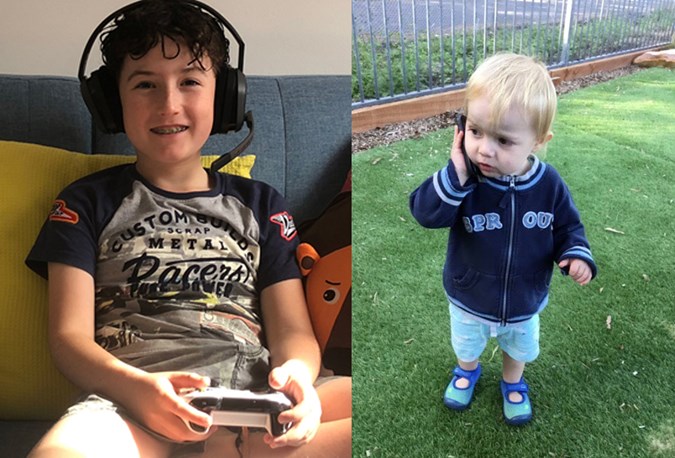
Maxwell is very fond of his devices. Thankfully, Louis doesn’t quite understand that the phone needs to be charged before he can use it.
3. Avoid shock factor: be real about the consequences
The consequences of electric shock are real and dangerous. Electric shocks can cause serious injuries, especially to young children, and at worst – they can be fatal. Electricity is all around us, and our children are curious. Sticking pencils, fingers and other hazardous objects into power points, or even throwing mum’s mobile phone into the bath while washing, are just par for the course for toddlers. So it’s important parents remove as many hazards as possible.
School-age children are a tad easier to educate about the risks and consequences of playing with electricity. We can’t stop some things, but we, as parents, can minimise the risks! As their curiosity grows, it’s important to communicate the dangers in a way that is age-appropriate, relevant to the child, and avoids scaremongering. For example, if your child is at an age where they are using battery-operated or electrical devices, explain safe use to them.
If you notice your phone charger is fraying at the edges and the wires are exposed, talk about it with your child. Explain how the plastic cover protects and acts as a safe barrier between the live electrical current and any fingers that could touch the wire. Explain what happens when a person gets an electric shock. Talk about how important it is to keep electrical appliances away from water.
Its not about being scary – it’s about educating children with enough information so that they can understand. If you explain the risks using appliances that are familiar to them, they’re more likely to understand them. Similarly, if you discuss the potential dangers and develop clear safety rules around electricity as a team, they are more likely to adhere to these rules.
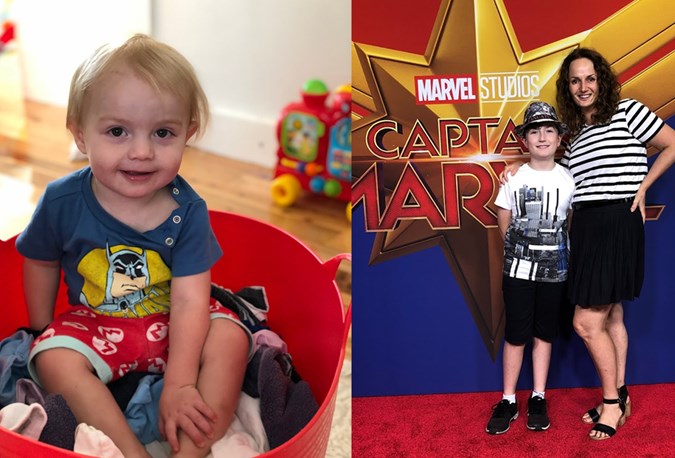
Franki's son Louis (left, and Franki with her eldest son Maxwell, 10, at the Captain Marvel premiere.
4. Shock horror: You can lead by example
The beauty of our mini-me’s is that they mimic just about everything we do! Clever parents totally use this to their advantage, and lead by example. That means practicing electrical safety at every opportunity. If your children see you turning the power points off when not in use, or before inserting a plug, that’s a great start.
In fact, you should keep all appliances packed away when not in use. Avoid covering lights, light bulbs or other heat-sensitive items with fabrics or plastics. Don’t do silly things like I did, like drying your hair while the kids are taking a bath in the same room – seriously, who would do that?! Think smart, and your children will follow suit.
The Shock Factor safety campaign aims to teach electrical safety to Australians, including those who work directly with electricity, parents and young kids. As parents, we can do our bit by signing the safety pledge and actively committing to being more safe around the home.
For more information about easy ways you can make your home safer and teach electrical safety to children, visit Shock Factor now.

Franki Hobson is a women’s lifestyle journalist and editor with more than twenty years’ experience. Her areas of expertise include parenting and health and well-being. Franki has two gorgeous boys, Maxwell, 10, and Louis, 1 ½.
Brought to you by



